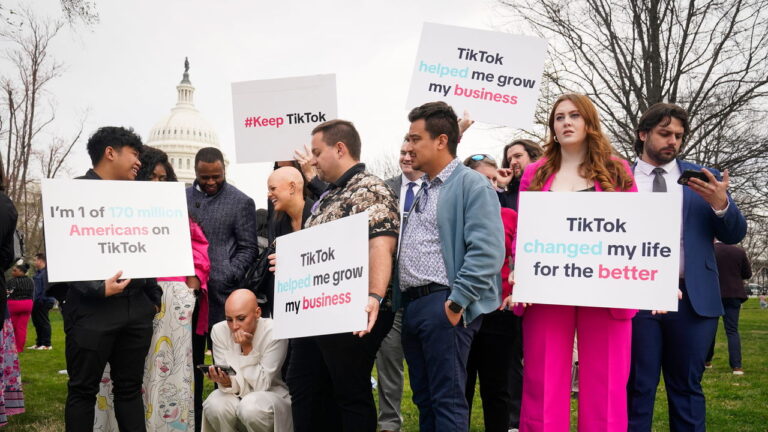
Andrew Odlyzko, a professor of mathematics at the University of Minnesota, has a side hustle: he has become one of the world’s foremost experts on the history of speculative bubbles. Part of his time is spent at the Bank of England, where he photographs pages from thousands of handwritten ledgers which he later scours for clues about earlier episodes of excess. He hopes that generative artificial intelligence (AI) will one day take the drudgery out of the task. It is not lost on him that the latest speculative mania revolves around the technology itself.
In recent days the standard-bearers of generative AI, including Nvidia, a chipmaker, and tech giants such as Amazon and Microsoft, have plummeted in value. That has left sceptics, who had warned of a bubble in the technology, feeling terribly clever. Many pointed to two earlier periods of frenzied over-investment: the railway manias of the 19th century and the telecommunications bubble of the late 1990s. In both cases, the capital expenditures were similar to the huge amounts that big-tech firms are promising to spend on the data centres at the heart of the AI revolution.
Professor Odlyzko is an authority on both episodes. His research on the railway manias of 19th-century Britain is widely cited. Before becoming an academic, he worked at Bell Labs, a famed research outfit, where he was one of the first to question the fallacy that internet usage was doubling every 100 days. Yet he dismisses the idea that railways or the internet are useful guides to thinking about generative AI. They start from different positions, he says. Both railway and telecoms firms knew early on how profit could be generated: the first by taking traffic from other forms of transport; the second by eclipsing other forms of communication and entertainment. It was estimates of the size of the potential bonanza that proved hallucinatory. Generative AI is different. Its disruptive potential is clear, but as yet no one knows what its main uses will be, or how it will make money. Professor Odlyzko sees better parallels with the telegraph and electricity booms of 19th-century America. “Engines that Move Markets”, by Alasdair Nairn, is a history of investment bubbles and a useful primer on both episodes. Sadly, it will not reassure today’s investors.
Deployment of the telegraph provides a rough facsimile of how the tech giants approach generative AI. At the beginning, telegraphs mostly helped make trains run more smoothly. Railway barons such as Cornelius Vanderbilt built telegraph networks alongside their existing tracks, much as today’s tech giants have weaved generative AI into their existing products. Stand-alone telegraph companies had a difficult time at first. In the mid-19th century massive investments were accompanied by fierce price wars, as companies sought to protect their fief. The payoff came only after the civil war, when commercial use of the telegraph soared and companies such as Western Union became profitmaking machines.
The early history of electric lighting looks more pertinent to Nvidia. Like generative AI, it aroused popular excitement early on; for centuries, people had wanted a cheaper and cleaner alternative to burning candles or oil for light. Like Nvidia’s AI chips, known as graphics processing units (GPUs), one technology took an early lead. That was arc lighting, which Charles Brush, an American entrepreneur, helped pioneer. He established the Anglo-American Brush Electric Light Corp, whose shares soared when it licensed its technology to companies that Brush had helped finance. The gush of profits made it seem inevitable that the business would prosper. Naysayers were derided as unimaginative.
Neither story ended well. Just as it had reached commercial success, Western Union’s telegraph was gazumped by Alexander Graham Bell’s telephone, which many of the smartest minds of the time had dismissed. The company’s profitability declined from then on. As for electricity, it eventually became clear that arc lighting was too expensive to make business sense, and the “Brush bubble” burst. Thomas Edison proved the superiority of incandescent lighting. His company eventually became General Electric, a beacon of American enterprise throughout the 20th century. It is too early to say whether Nvidia’s Jensen Huang will go down in history as a Brush or an Edison.
Professor Odlyzko makes two additional points. First, many of the previous investment booms were backed by government spending. This time the generative-AI capital outlays come from big-tech firms that are, as he puts it, “insanely rich”. There is little danger of their coffers running dry. That said, his second point is that if demand for generative-AI products fails to materialise soon, the tech giants might start to reduce their spending on Nvidia’s GPUs. The risk for the chipmaker is not only from receiving fewer orders. The tech firms could also dump surplus GPUs on the second-hand market, further depressing prices. Nvidia’s share price could crater, he says.
The only certainty is surprise
Let’s be humble. As Roy Amara, an American futurist, said, “We tend to overestimate the effect of a technology in the short run and underestimate the effect in the long run.” No one knows for sure what generative AI’s “killer app” will be. Professor Odlyzko notes that few expected passenger trains to be more important than freight during the railway boom. They were. Likewise email became the surprise success of the early internet era.
One common lesson from history is that booms and busts are often accompanied by wider economic uncertainty and changes in the cost of capital. That appears to be true in the current turmoil. With luck, all the latest sell-off will do is skim froth off the top of an overhyped market. It is still too soon to call time on what is a promising but unproven technology. ■



















